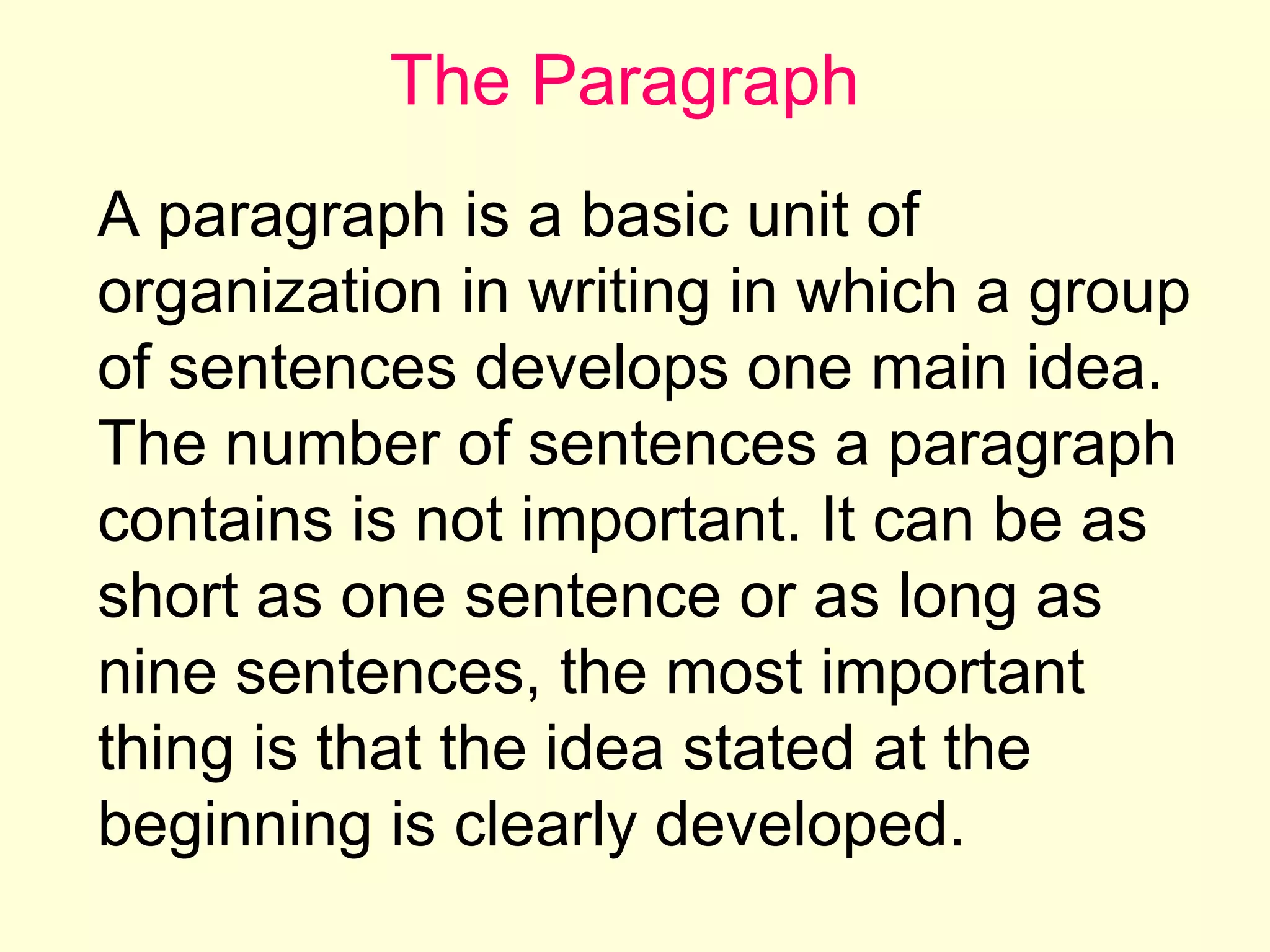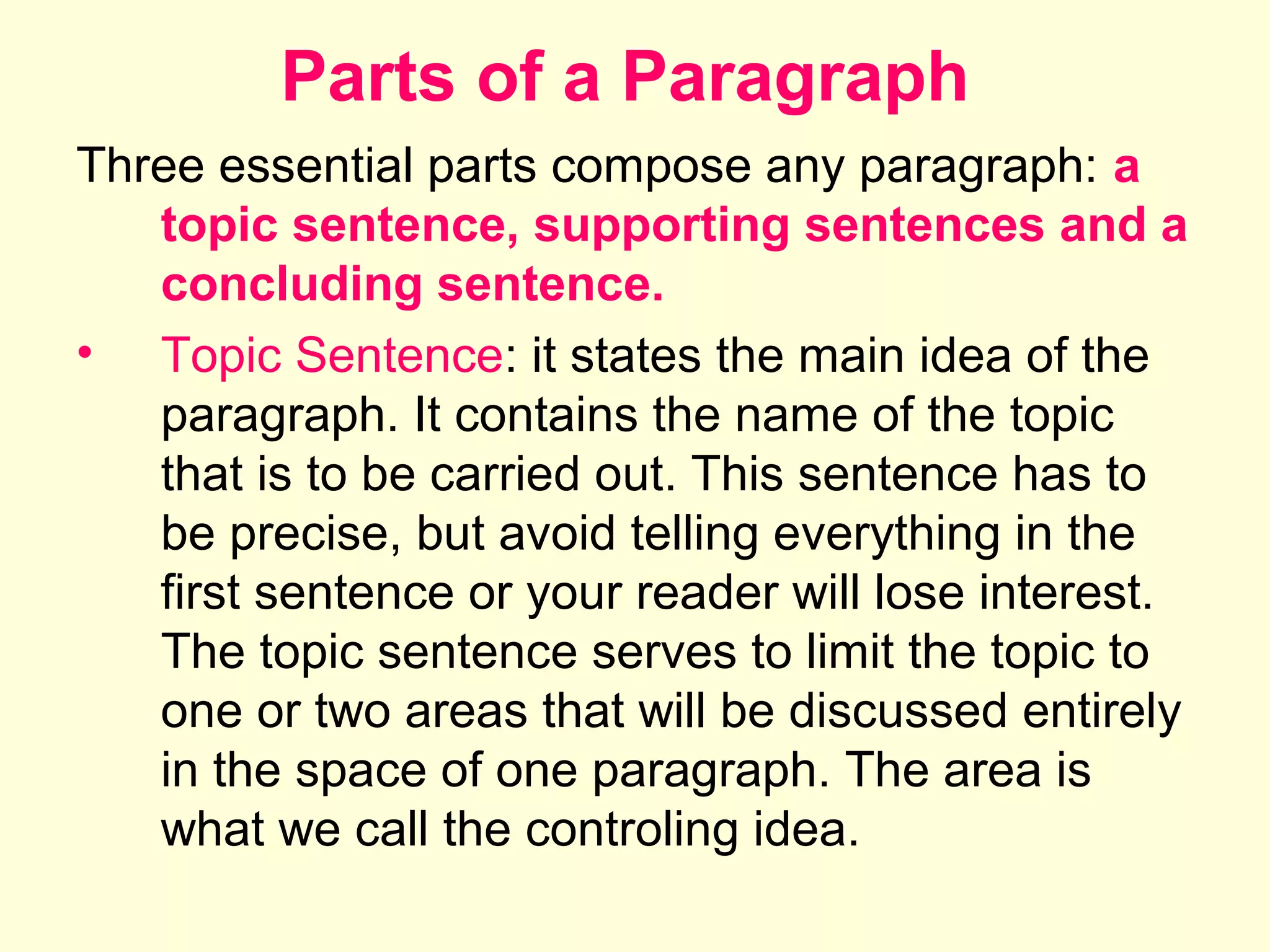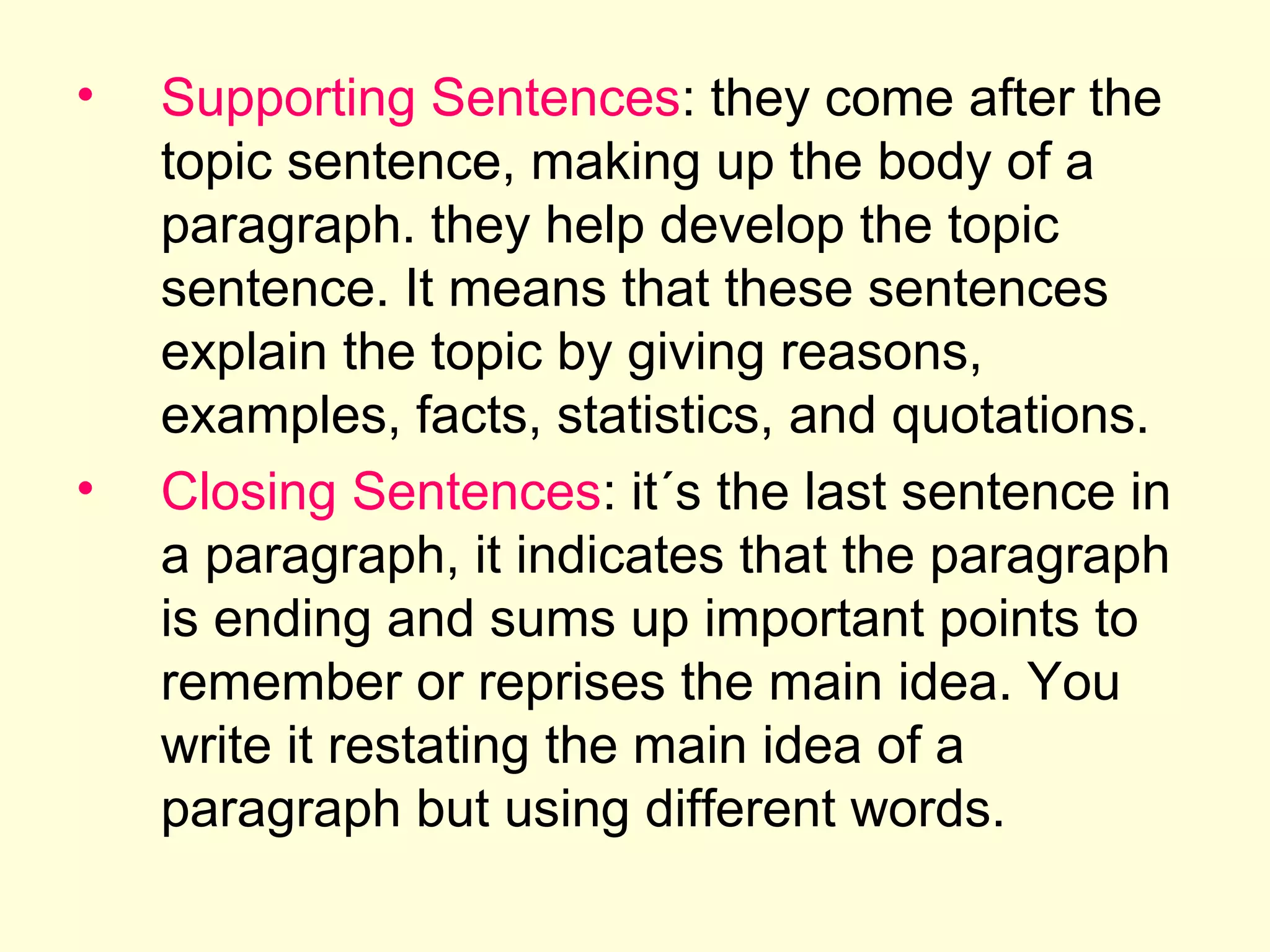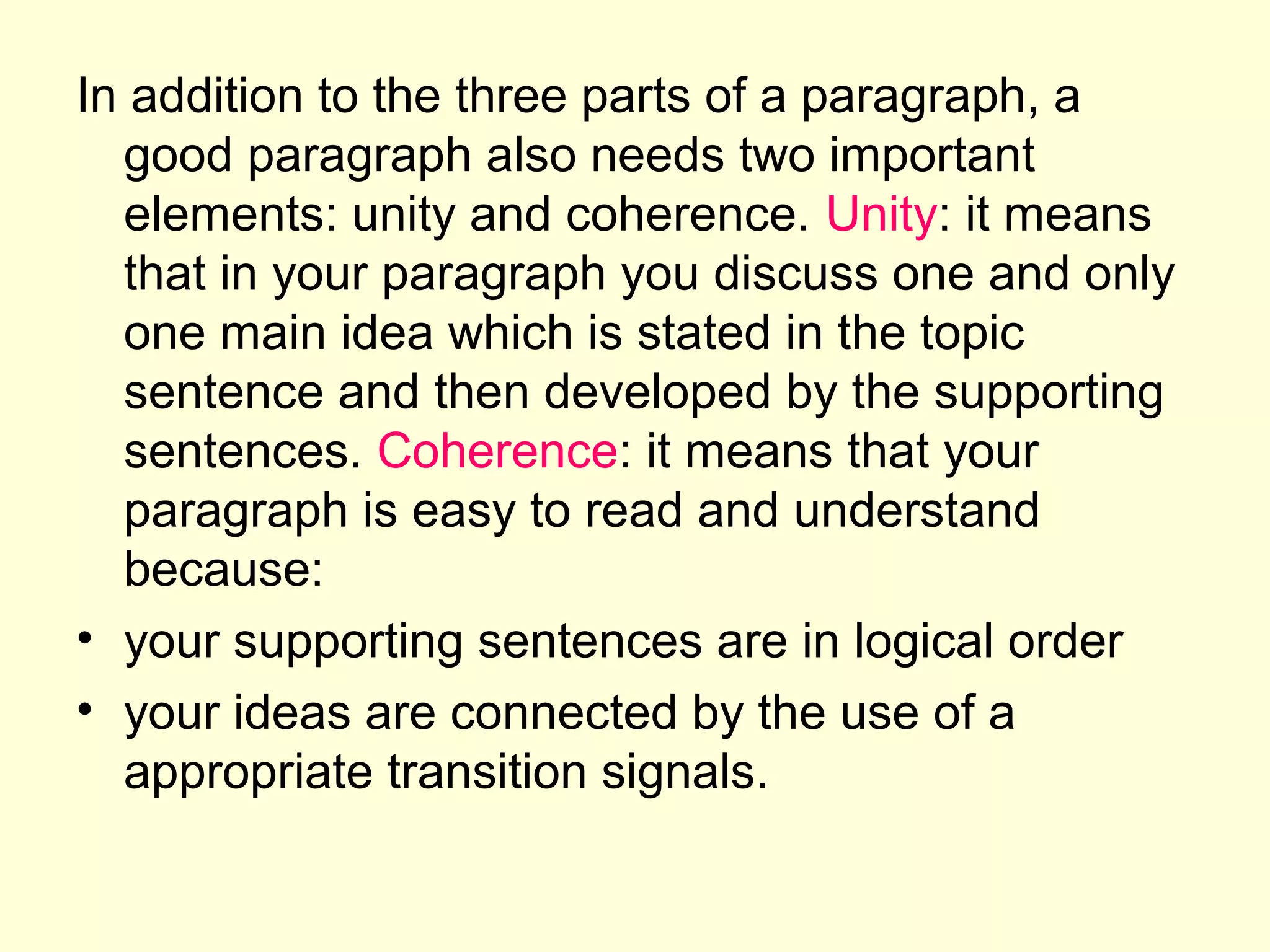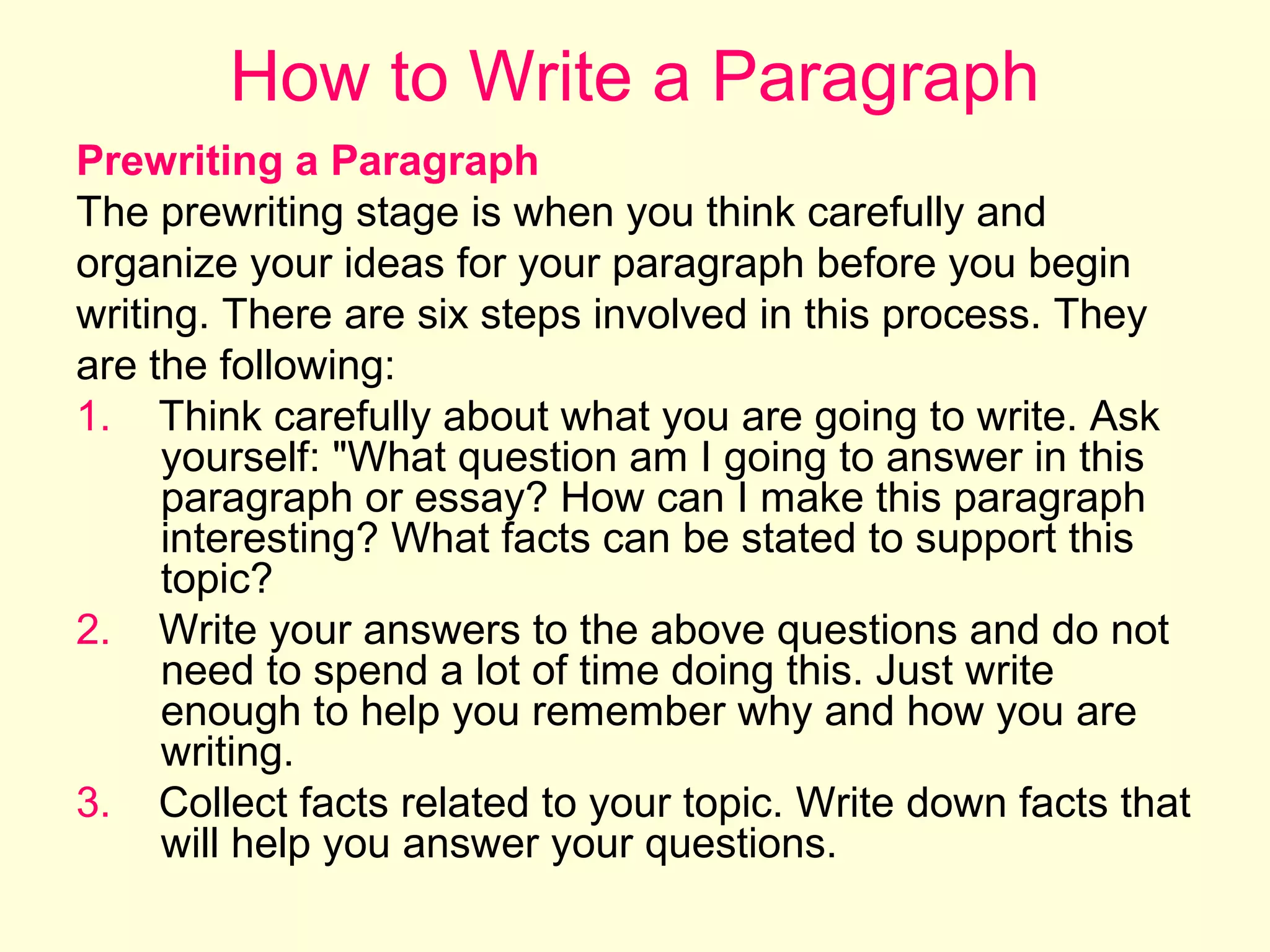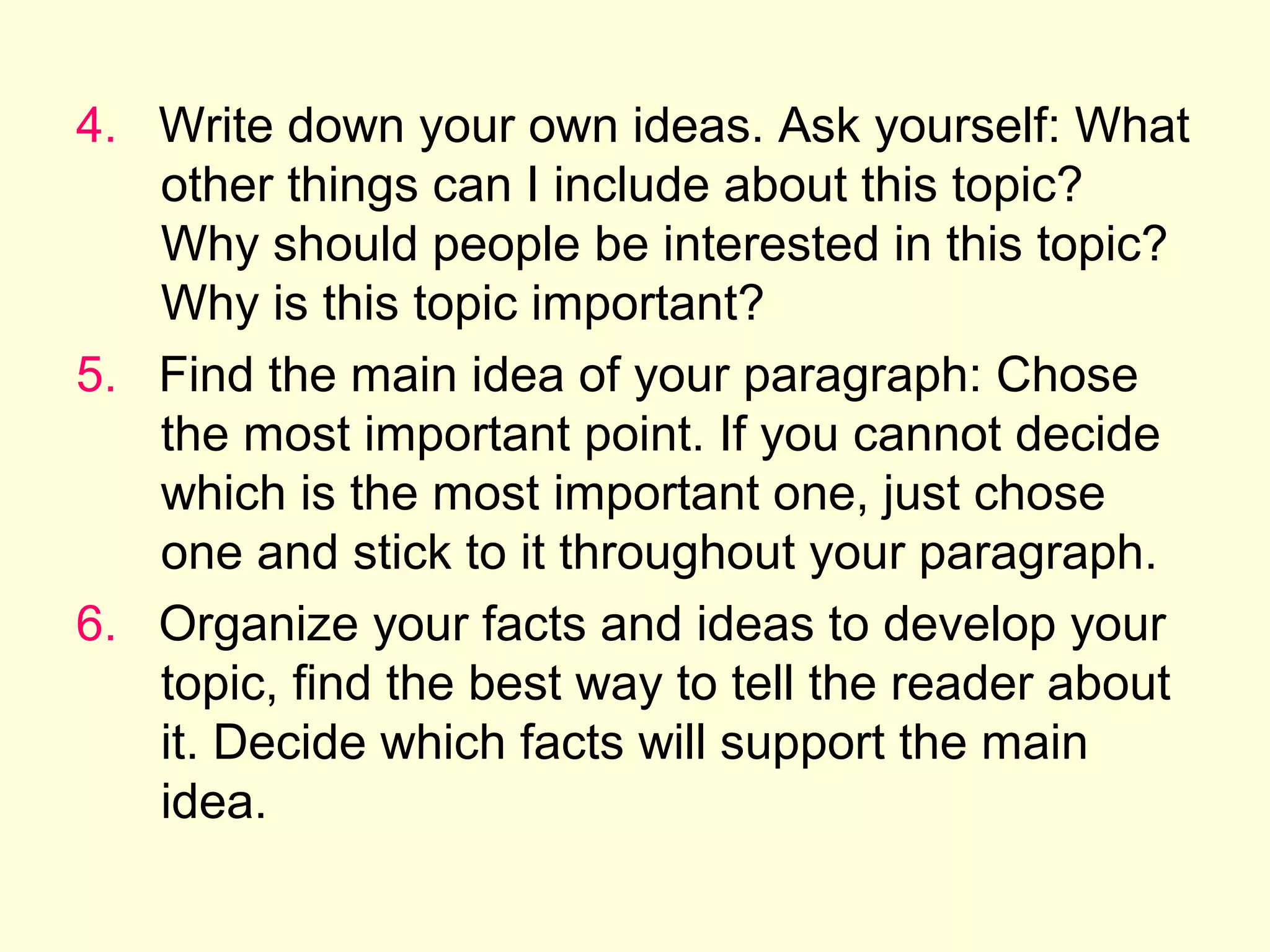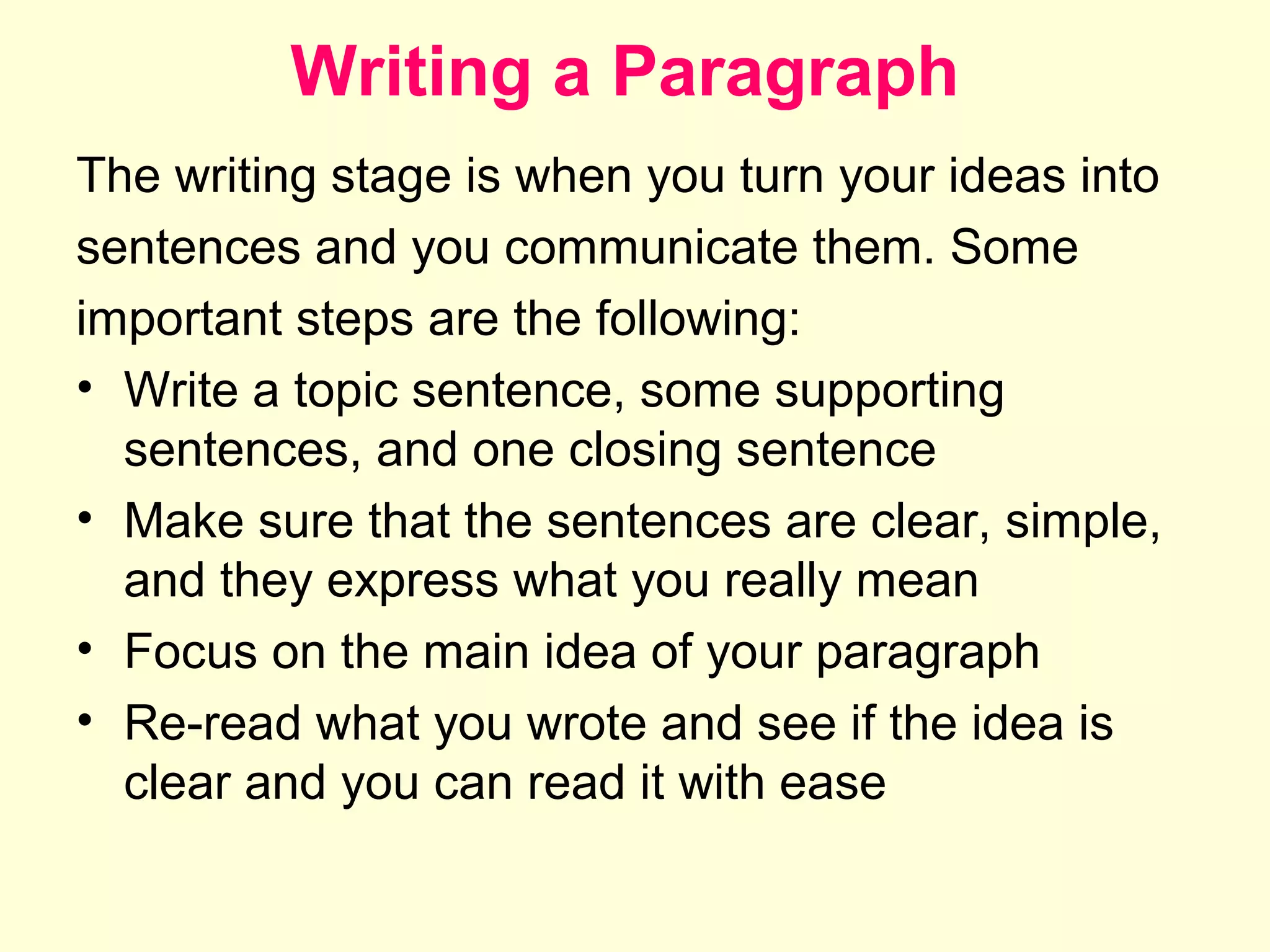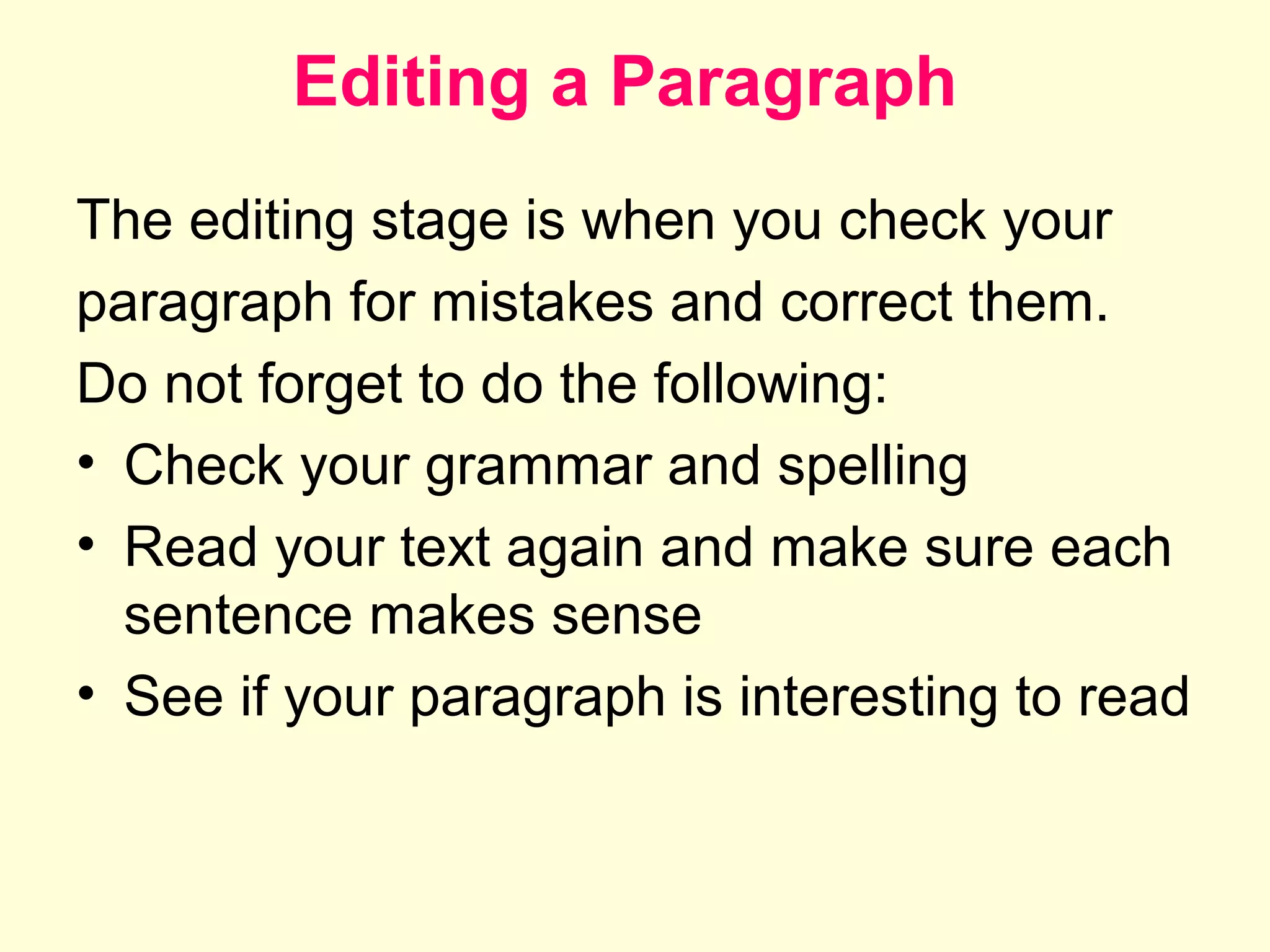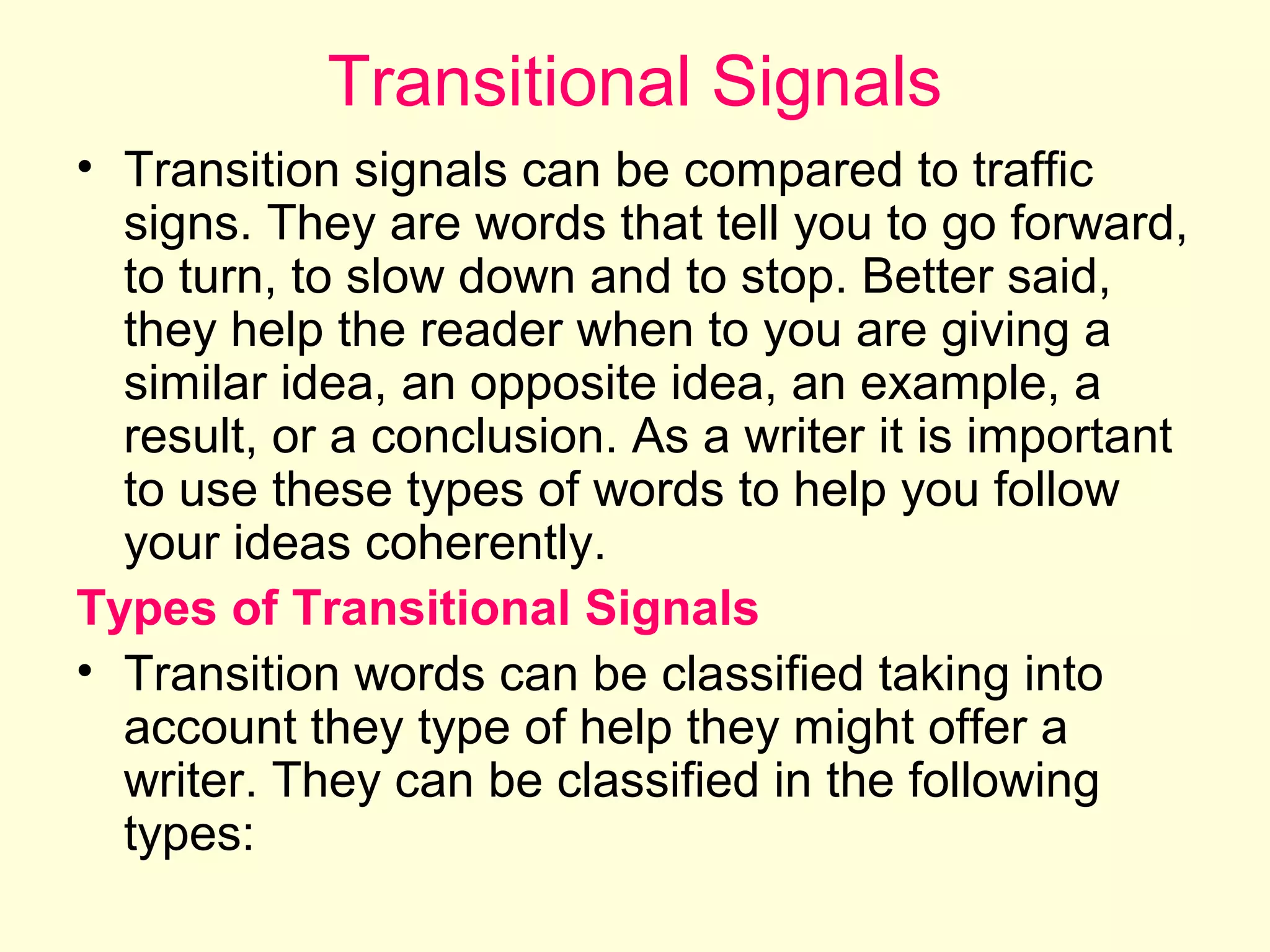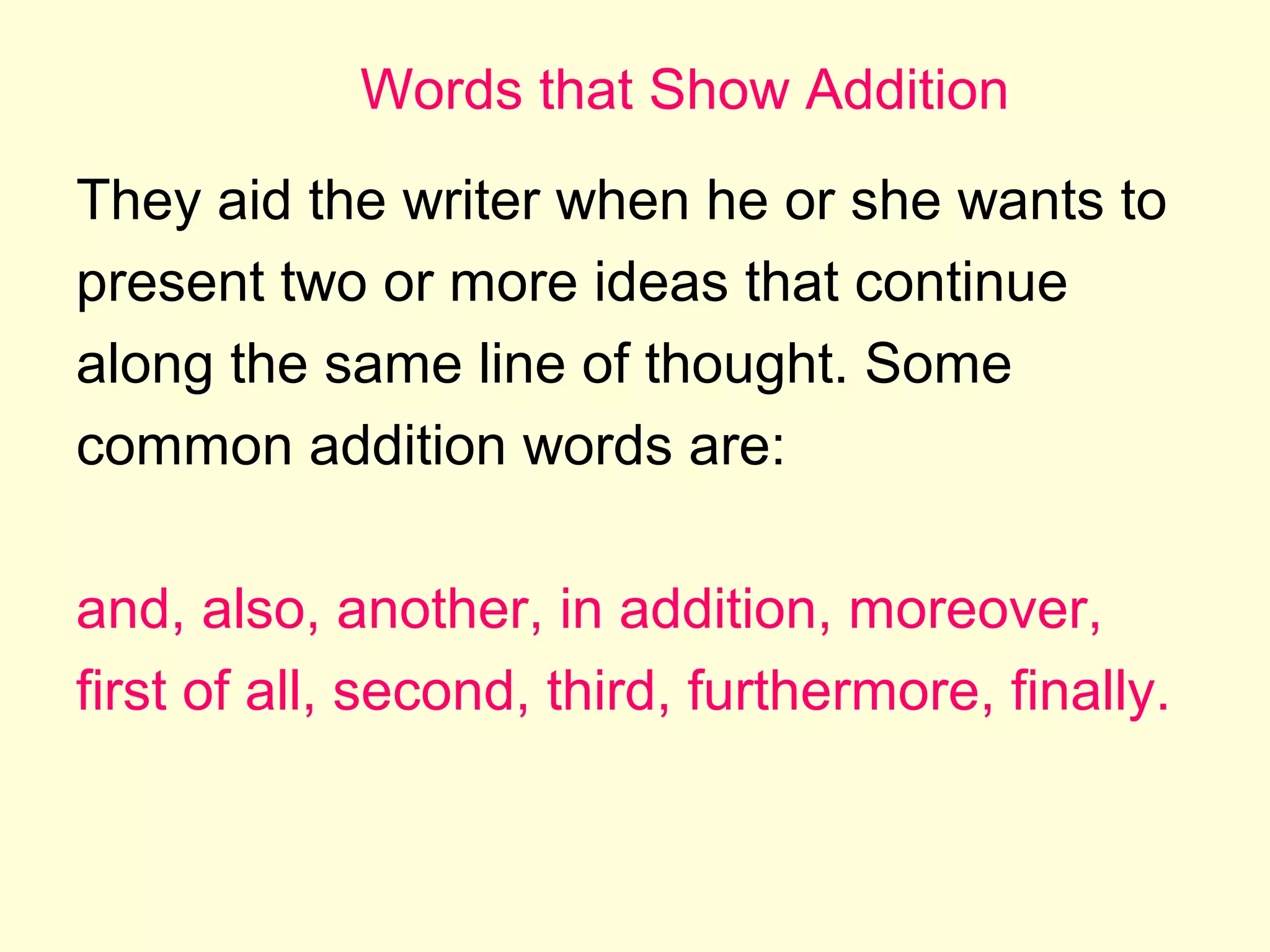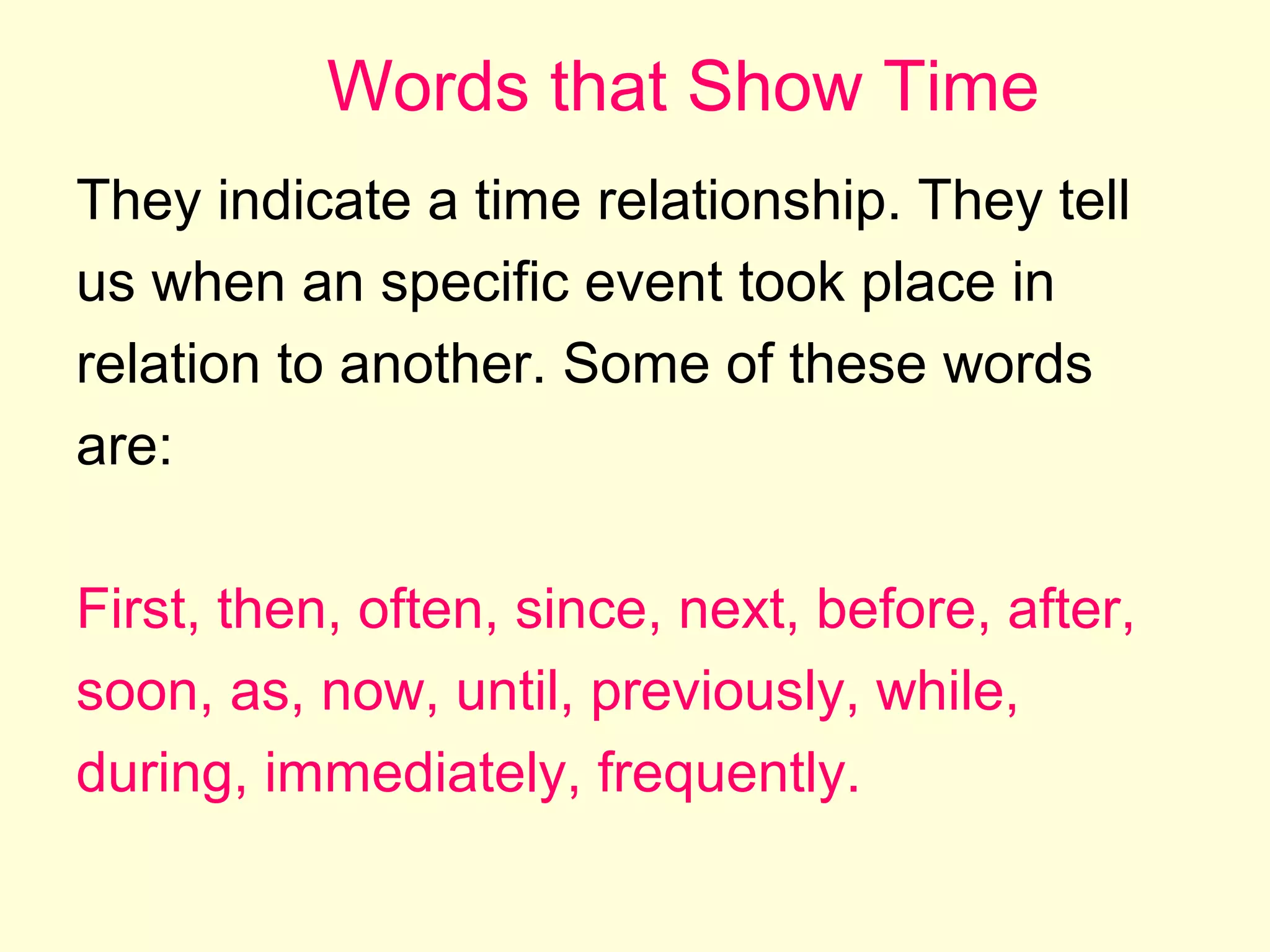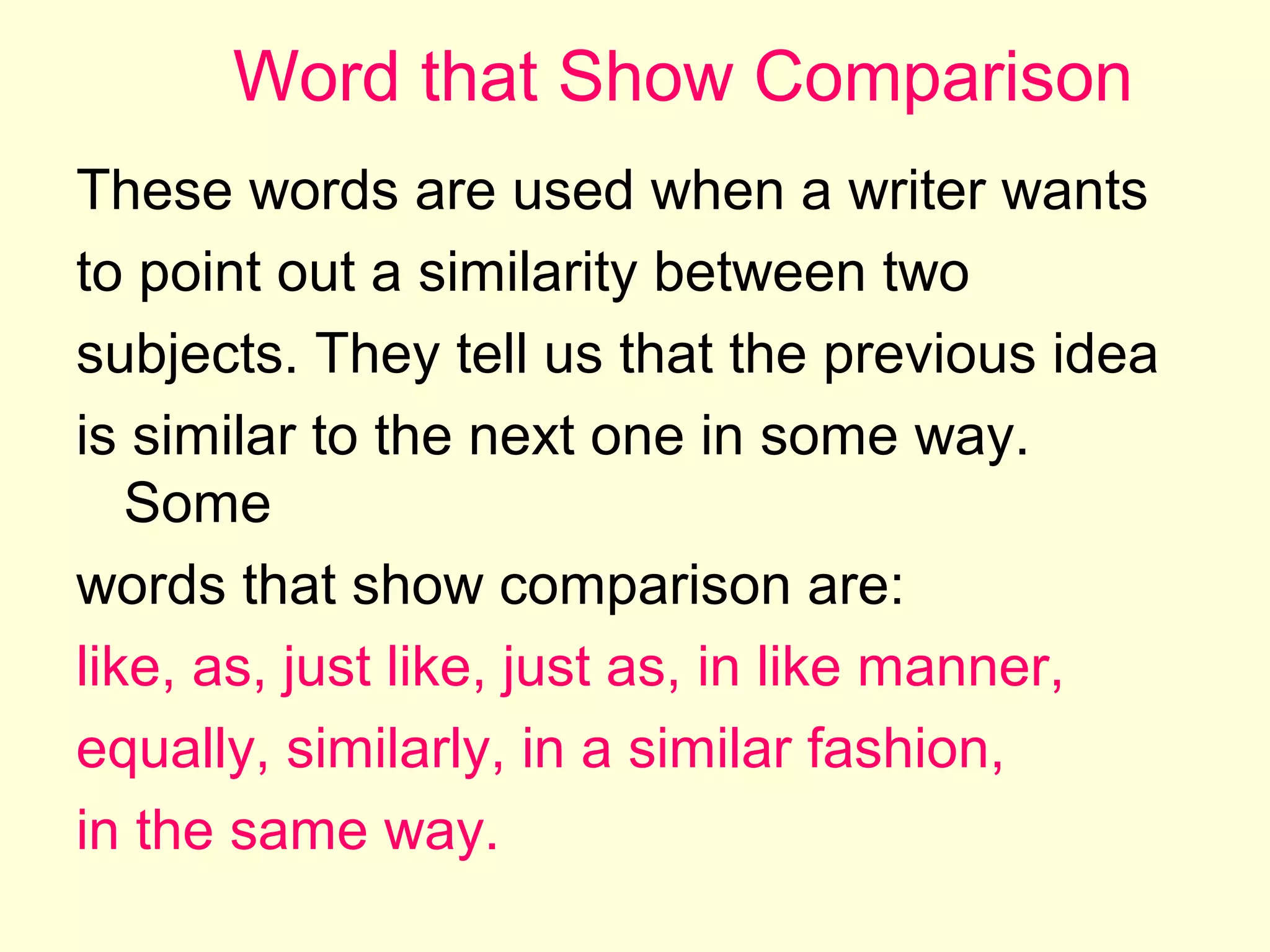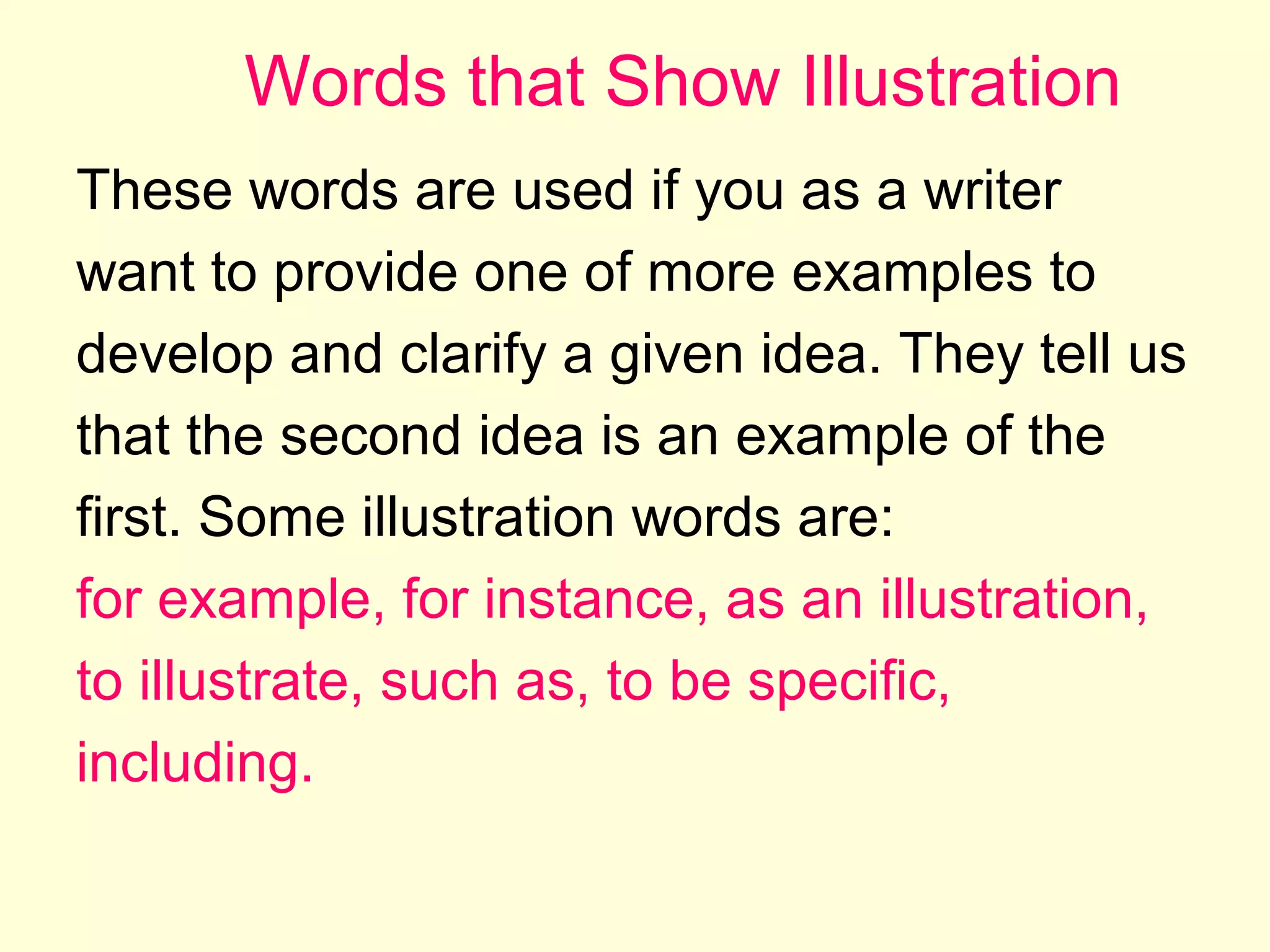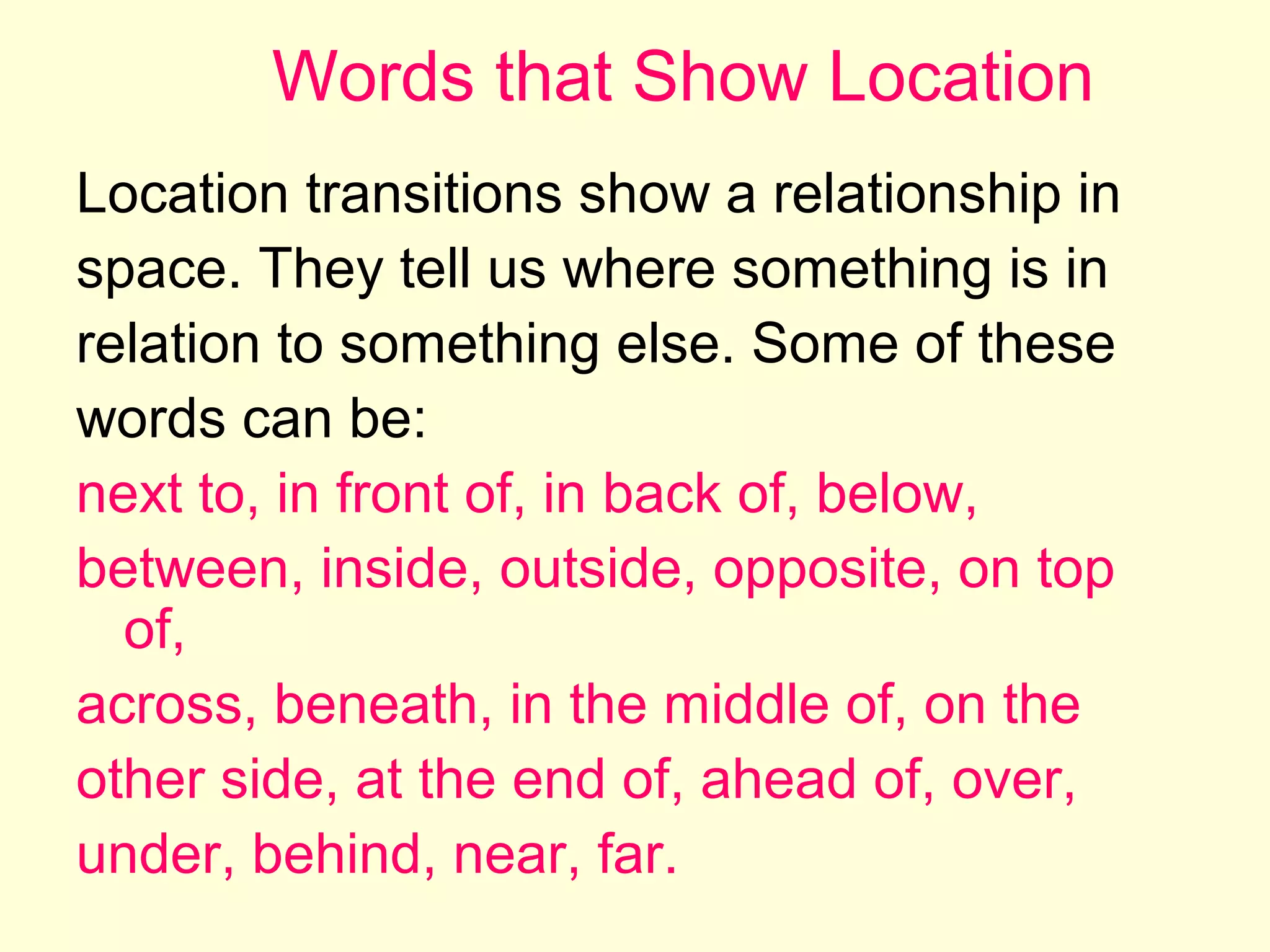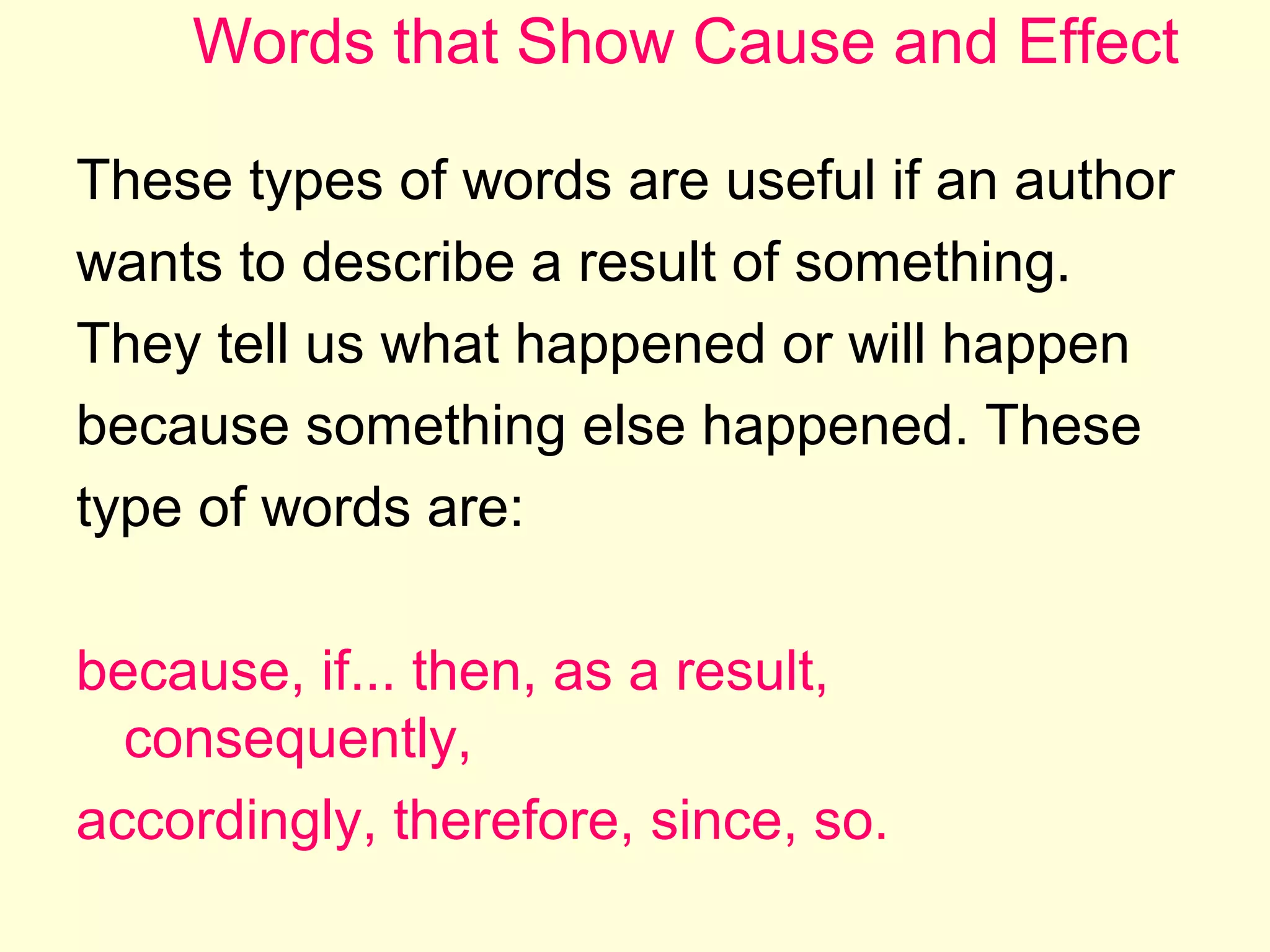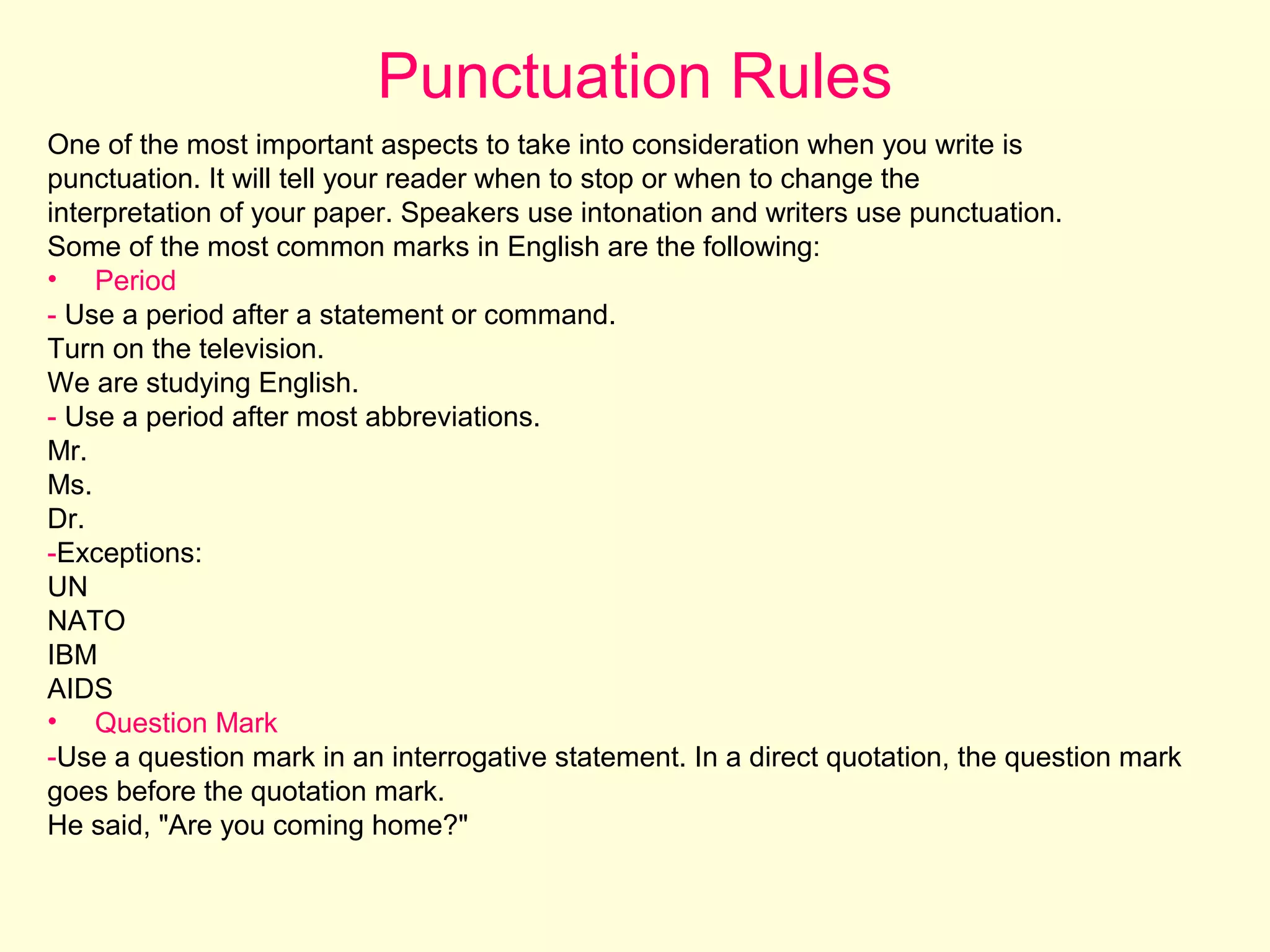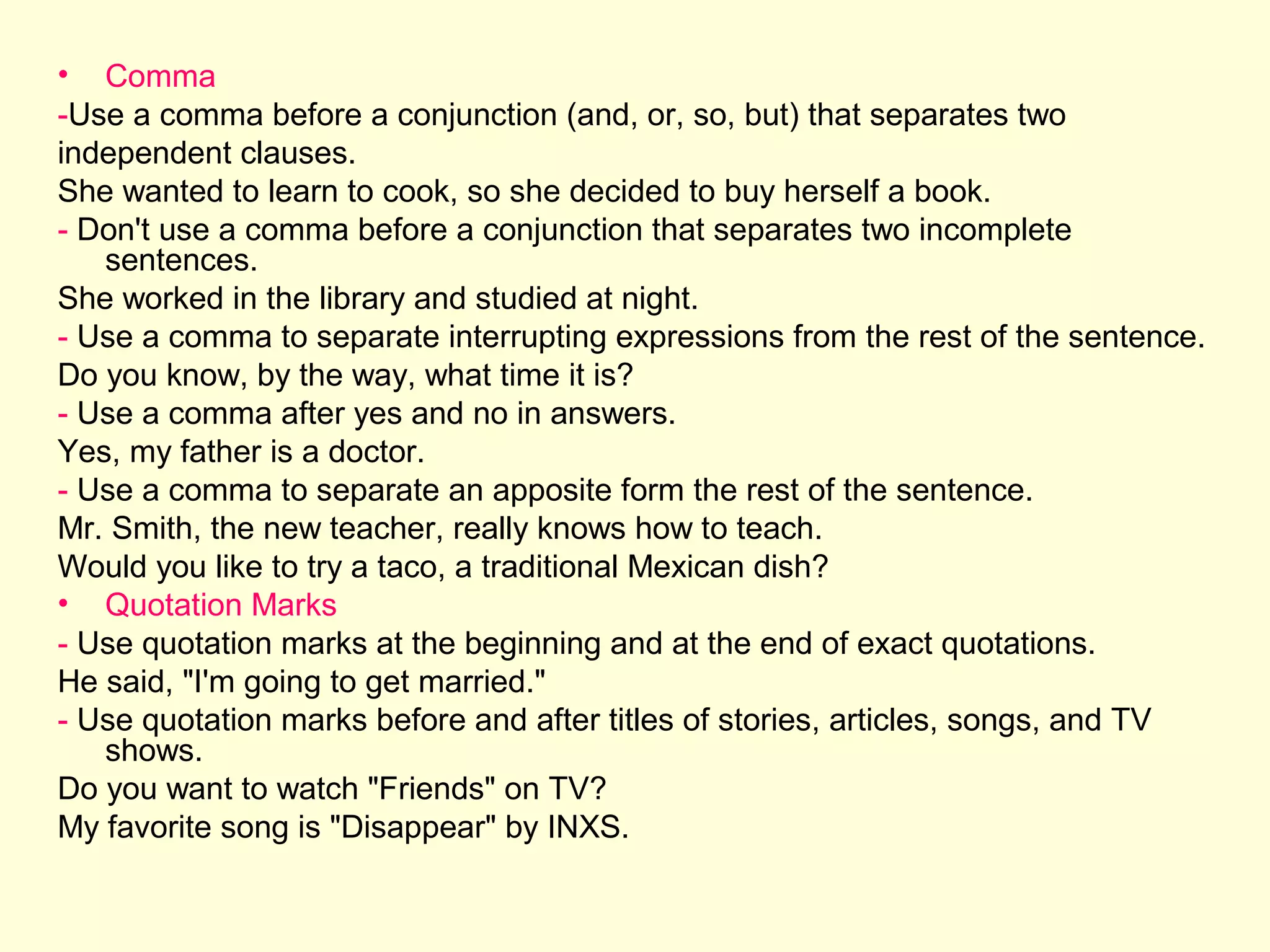The document provides information on how to write effective paragraphs. It defines a paragraph as a group of sentences that develops one main idea. There are typically three parts to a paragraph: a topic sentence, supporting sentences, and a concluding sentence. Additionally, a good paragraph maintains unity by only discussing one main idea and coherence by connecting ideas in a logical order. The document outlines the steps for prewriting, writing, and editing paragraphs and provides examples of transitional signals that can be used to link ideas between sentences and paragraphs.
